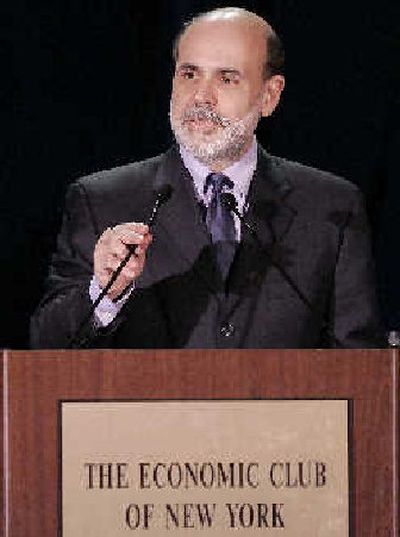Bernanke gets first crack at rate hike

WASHINGTON — As Ben Bernanke takes the chairman’s seat, Federal Reserve watchers wonder how many more interest rate increases are in store.
Bernanke and his Fed colleagues are expected to boost America’s borrowing costs yet again at the end of their two-day meeting Tuesday. And analysts will be searching for clues about where the central bank is headed after that.
Under former chief Alan Greenspan, the Fed has been tightening credit in steady, quarter-percentage point steps since June 2004 to keep the economy and inflation on an even keel. Many economists believe the Fed will end its rate-raising campaign this year, but they don’t know when and they don’t think even Fed officials know.
“It is difficult for the Fed because there are all these crosscurrents,” said Lynn Reaser, chief economist at Bank of America’s Investment Strategies Group.
For instance, the housing market is slowing. If that were to crimp consumer spending and thus overall economic activity, the Fed would move to the sidelines sooner rather than later.
At the same time, there are concerns that an improving jobs market could lead to rapid wage gains that —if not blunted by other economic forces — could spark inflation. There’s also concern that elevated energy prices could feed into higher costs for other goods and services, worsening the inflation environment. Under those scenarios, higher rates would be warranted.
And, there is the “conundrum,” as Greenspan put it, on why mortgage and other long-term rates have stayed low when short-term rates were rising.
Bernanke last week said there are a number of forces could be behind the low long-term rates, and each possible explanation would carry a different implication for the Fed’s interest-rate policy. One Bernanke theory, for instance, is that there’s been global excess of savings relative to desired investment. That, he said, might mean the Fed would want to have short-term rates lower than they would otherwise be.
On the other hand, if long-term rates are low because of factors such as strong demand for long-term bonds from pension funds, then short-term rates would need to be higher, he said recently.
Against that backdrop, some economists believe Fed policy-makers will shape their statement to give themselves plenty of leeway in the months ahead.
“I think the Fed will get rid of the reference about what to do in the future,” said Mark Zandi, chief economist at Moody’s Economy.com. “I think they will make the statement as plain vanilla as possible, and they won’t try to send a strong signal one way or the other,” he said.
At Greenspan’s last meeting, on Jan. 31, the Fed bumped up a key short-term rate and said that “some further policy firming may be needed.”
Economists predict the Fed on Tuesday will boost the funds rate, the interest that banks charge each other on overnight loans, by one-quarter percentage point, to 4.75 percent. That would mark the 15th increase of that size since June 2004.
In response, commercial banks would boost their prime lending rate — for certain credit cards, home equity lines of credit and other loans — by a corresponding amount to 7.75 percent.
Those moves would leave borrowing costs at their highest in just about five years.
“Ben Bernanke seems like he is going to continue the legacy of Alan Greenspan and set himself up as being very staunch on inflation,” said Victor Li, associate professor of economics at Villanova University.